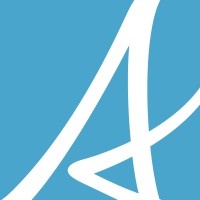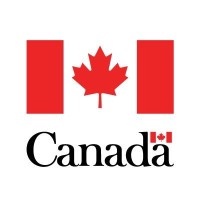Overview: Why mining grants in Alberta matter in 2026
Alberta’s mining sector is diversifying beyond oil sands toward critical minerals, battery metals, and value‑added processing. Organizations are searching for mining grants in Alberta, non‑dilutive financing, tax incentives, and cost‑share programs that reduce risk in exploration, scale innovation, and accelerate decarbonization. Public funding for mining companies can support mineral exploration, metallurgical research, pilot plants, digital transformation, mine reclamation, workforce development, and Indigenous partnerships. This directory provides a structured guide to Alberta mining funding programs, including mineral exploration grants Alberta, critical minerals funding Alberta, mine reclamation grants Alberta, and SR&ED mining Alberta opportunities, while explaining how to apply mining grants Alberta with strong eligibility and documentation.
The evolving opportunity set: critical minerals and beyond
Alberta’s resource base includes lithium brines, vanadium, titanium, rare earth elements, industrial minerals, and metallurgical coal, alongside oil sands mining. Related priorities include rare earth processing grants Alberta, lithium funding Alberta (including direct lithium extraction funding), vanadium grants Alberta, titanium mining funding Alberta, and mineral processing funding Alberta. Secondary opportunities cover rare earth elements grants Alberta, battery metals funding Alberta, geothermal‑lithium projects funding Alberta, beneficiation funding, ore sorting technology grants, and sensor‑based sorting mining funding that lift grade and reduce energy use. For late‑stage projects, commercialization funding and export grants for mining companies Alberta help suppliers and technology SMEs expand to global markets.
Funding landscape: federal–provincial mix
Organizations in Alberta typically combine provincial programs (e.g., innovation vouchers, emissions reduction calls, workforce training) with federal instruments (e.g., NRC IRAP mining support Alberta, NSERC Alliance mining funding, Mitacs mining projects Alberta, SDTC mining projects Alberta, PrairiesCan initiatives, Strategic Innovation Fund streams, and programs supporting the Critical Minerals Strategy). In addition, sector‑agnostic incentives—such as SR&ED claim mining engineering Alberta—can be stacked with grants, when permitted, to de‑risk R&D, pilots, and scale‑up.
What types of funding are available?
Public support spans several formats. Understanding mechanisms and eligible costs is essential to match your project with the right instrument and to meet mining grant deadlines Alberta.
Non‑repayable contributions and grants
Non‑repayable contributions (often called “grants”) provide cost‑share support for projects that deliver public benefits such as emissions reduction, environmental remediation, or innovation diffusion. Mining innovation funding Alberta, clean technology grants mining Alberta, environmental remediation grants mining Alberta, and workforce development grants mining Alberta are typical examples. Many intakes are competitive and scored on technical merit, impact, budget realism, and risk mitigation.
Repayable contributions, low‑interest loans, and guarantees
Some programs offer repayable contributions or low‑interest financing to bridge commercialization gaps for mining technologies, pilot plants, or infrastructure. These can complement non‑dilutive funding and venture debt for mining tech Alberta, subject to matching funds mining Alberta and cost‑share rules.
Tax incentives and credits
Tax incentives mining sector often include SR&ED mining Alberta for experimental development in mineral processing, automation, data analytics, or engineering. Exploration tax incentives Alberta can support earlier‑stage activities in prospecting, geological mapping, and drilling. Investment tax credit clean tech mining may become relevant for decarbonization and site electrification projects.
Vouchers and cost‑share programs
Vouchers for R&D and pilots help SMEs obtain services from labs or research partners. Alberta mining equipment grants, SME voucher programs Alberta mining, and commercialization vouchers mining Alberta typically cover eligible third‑party costs such as testing, IP strategy, and go‑to‑market planning. Cost‑share percentages vary by program and applicant type.
Exploration and geoscience: de‑risking discoveries
Mineral exploration grants Alberta target junior mining financing Alberta, prospecting grants Alberta, drilling grants junior mining Alberta, geophysics survey funding Alberta, geological survey grants Alberta, and sample analysis funding mining Alberta. Many programs emphasize critical minerals funding Alberta for lithium brine extraction funding Alberta, rare earth processing funding opportunities Alberta, and vanadium or titanium projects. Eligible costs can include geophysical surveys, drilling, core logging, geochemical assays, geospatial analytics funding mining Alberta, drones in mining funding Alberta, and satellite monitoring mining funding for regional reconnaissance.
Early studies and permitting support
Feasibility studies, baseline environmental work, and community engagement can be eligible under certain exploration assistance programs or mine remediation grants Alberta when tied to responsible development. Environmental monitoring funding mining and biodiversity and habitat restoration mining funding may support fieldwork plans that reduce impacts and prepare for permitting.
Processing, pilot plants, and metallurgical research
Metallurgical research grants Alberta and mineral processing funding Alberta can cover comminution efficiency funding, ore sorting technology grants, and pilot plant funding for mineral processing Alberta. Projects may include hydrometallurgy, flotation, roasting, separation of rare earths, and direct lithium extraction pilots. Demonstration project funding mining Alberta supports scale‑up from TRL 5–7 pilots toward TRL 7–9 demonstrations with real‑world performance data, MRV plans, and commercialization strategies.
Digital transformation and advanced analytics
Digital transformation mining grants Alberta and automation and AI in mining funding Alberta support data platforms, AI/ML mining optimization grants, digital twins mining funding Alberta, remote operations center funding Alberta, 5G/private LTE in mines funding, IoT sensors mining funding Alberta, geospatial analytics funding mining Alberta, and cybersecurity funding mining operations Alberta. These projects aim to lift productivity, reduce downtime, enhance safety, and improve ESG reporting.
Decarbonization, ESG, tailings, and water stewardship
Decarbonization funding mining Alberta, emissions reduction funding, and ESG funding mining Alberta are prominent in 2026. Priorities include electrification mining funding Alberta, mine fleet electrification grants, battery‑electric vehicle (BEV) mining funding, hydrogen haul truck pilots funding Alberta, ventilation on demand funding mining, renewable energy for mines grants Alberta, and carbon capture funding for mines Alberta. Emissions reporting funding mining Alberta and ESG reporting tools funding mining Alberta can support measurement, reporting, and verification (MRV).
Tailings management and circularity
Tailings management funding Alberta includes tailings dewatering funding, tailings pond reduction grants Alberta, tailings thickened discharge funding, paste backfill funding, and mineral waste valorization funding. Projects focusing on circular economy mining funding Alberta and mineral waste valorization funding can recover by‑products, reduce liabilities, and improve processing efficiency.
Water treatment and zero‑liquid discharge
Water treatment funding mining Alberta, water recycling grants mining Alberta, and zero‑liquid discharge mining funding address mine water management grants Alberta, acid rock drainage mitigation funding Alberta, pit lake remediation funding, and environmental compliance funding. Strong proposals quantify water savings, treatment performance, and risk reduction.
Reclamation and biodiversity
Mine reclamation grants Alberta and mine closure funding Alberta support progressive reclamation, wildlife corridor restoration mining grants, reclamation seed and soil grants, and habitat reconstruction. These projects reduce long‑term liabilities while delivering measurable ecological outcomes.
Workforce development, safety, and inclusion
Safety training grants mining Alberta, PPE innovation funding mining, and safety technology funding mining (collision avoidance, fatigue monitoring systems funding mining Alberta) help operators meet regulatory obligations and reduce incidents. Workforce development grants mining Alberta support workforce reskilling mining grants, apprenticeship funding mining Alberta, youth mining training grants, and women in mining funding Alberta. Programs may include the Canada‑Alberta Job Grant mining training and Indigenous Skills and Employment Training mining for inclusive hiring and upskilling.
Indigenous partnerships and community benefits
Indigenous mining funding Alberta and Indigenous partnerships mining grants can support partnership development, Indigenous equity participation mining funding, Impact Benefit Agreement funding supports, and community benefits agreement planning. Funding for Indigenous consultation costs may be eligible in certain streams. Supplier‑side supports include procurement readiness funding mining suppliers, ISO certification funding mining suppliers, export marketing funding mining suppliers, and trade show funding mining Alberta.
Eligible costs in partnership projects
Eligible costs can include community engagement, capacity building, technical studies, legal structuring for partnerships, training, and on‑the‑job mentorship. Strong proposals demonstrate shared governance, clear benefits, and long‑term commitments.
Regional perspectives inside Alberta
Funding priorities often connect to regional strengths:
- Calgary mining funding: technology commercialization, export programs, digital twins, and remote operations centers.
- Edmonton mining funding: advanced manufacturing, automation labs, university collaborations, NSERC Alliance mining research, and Mitacs Accelerate mining projects.
- Fort McMurray mining grants: tailings innovation, water stewardship, mine fleet electrification grants, and mine rescue training.
- Grande Prairie mining funding and Peace River mining grants: exploration, geophysics, drilling logistics, and workforce development.
- Red Deer mining grants and Lethbridge mining funding: supplier development, trade show funding, and CanExport for mining equipment exporters.
Eligibility criteria, matching funds, and stacking
Typical eligibility criteria for Alberta mining funding programs include incorporation in Canada, financial capacity, a credible project team, and operations or impact in Alberta. Projects should show technical merit, sound budgets, risk management, and quantifiable outcomes (e.g., GHG reductions, water savings, safety improvements, job creation). Matching funds mining Alberta are common; cost‑share ratios vary by stream, applicant type, and TRL. Grant stacking mining Alberta—combining multiple sources—may be allowed up to a cap, and some programs enable SR&ED plus grants stacking strategies to maximize non‑dilutive financing. Ineligible costs often include land purchases, routine operations, or expenses incurred before approval; always verify program guides.
Budgeting, accounting, and audits
Build a clear cost breakdown by work package (engineering, equipment, contractors, travel, overheads), indicate vendor quotes, and establish a cash‑flow plan that aligns with claim cycles. Post‑project reporting for mining grants Alberta may require audited statements, technical reports, and knowledge dissemination.
How to apply for mining grants in Alberta: step by step
Prepare early to meet mining grant deadlines Alberta:
1. Define objectives and KPIs tied to program outcomes (e.g., tailings reduction, electrification, safety).
2. Map eligibility criteria and intake windows (rolling intake mining funding Alberta or fixed calls).
3. Build a matched budget and document matching funds (bank statements, term sheets, cash on hand).
4. Develop a robust technical plan with milestones, TRL, risk matrix, and commercialization roadmap.
5. Engage partners (universities, Indigenous communities, suppliers) and secure letters of support.
6. Draft an MRV plan to measure GHG, water, ESG, and productivity impacts, with baselines and methods.
7. Submit via the program portal; track clarifications and be ready for due diligence or interviews.
Improving proposal quality and score
- Demonstrate additionality: explain why public funding is needed.
- Quantify benefits: use conservative, defensible assumptions.
- Show knowledge transfer: workshops, publications, and training.
- Address permitting and environmental interactions early.
- Include a realistic schedule and procurement strategy.
- Provide resumes, prior project results, and references to de‑risk delivery.
Common reasons applications fail
Unclear problem definitions, weak budgets, insufficient matching funds, missing letters of support, unrealistic timelines, and inadequate risk mitigation are frequent pitfalls. Draft early, peer‑review the narrative, and ensure consistency across forms, attachments, and budget tables.
Measurement, reporting, and verification (MRV)
For emissions‑focused projects, define the baseline, boundaries, calculation methods, and data sources. For water projects, specify influent/effluent quality, recovery percentages, and zero‑liquid discharge metrics. For safety and workforce projects, include training hours, certifications, and incident rate trends. Set up data systems—IoT sensors, data platform funding mining Alberta—to automate collection and reporting.
Commercialization, export, and supplier growth
Mining commercialization funding Alberta supports pilot‑to‑market transitions with customer trials, certifications, and scale‑up planning. Export grants for mining suppliers Alberta, CanExport for mining suppliers Alberta, trade show funding for mining suppliers in Edmonton, and global mining market entry grants Alberta help local firms reach international buyers. Procurement readiness funding mining suppliers and ISO certification funding mining suppliers can accelerate prequalification for large mining customers.
Tax credits and SR&ED strategies
SR&ED for mining engineering projects Alberta can cover experimental development in comminution, ore sorting, AI/ML optimization, and process control. Combine SR&ED with grant stacking—when permitted—to increase total non‑dilutive financing while maintaining compliance with each program’s stacking limits. Keep contemporaneous documentation: hypotheses, tests, failures, data logs, and technical narratives.
Risk, EHS, and permitting interactions
Funding for environmental compliance may intersect with permits; ensure scopes are complementary and avoid funding ineligible compliance costs where prohibited. For projects with potential impacts on Indigenous rights, build early consultation and partnership budgets, and document engagement steps.
How helloDarwin simplifies access to funding
Organizations often lack time to navigate programs, eligibility, and deadlines. helloDarwin’s approach combines expert guidance and a SaaS platform to streamline discovery, eligibility checks, matching, and application tracking. This hybrid model helps businesses identify relevant Alberta mining funding programs, estimate cost‑share and stacking options, and coordinate documents to apply efficiently and transparently.
Key takeaways and next steps
- Alberta mining grants support exploration, innovation, decarbonization, water and tailings management, reclamation, safety, and workforce development.
- Combine provincial and federal programs with SR&ED, respecting stacking caps and matching funds rules.
- Start early, quantify benefits, secure partners, and align KPIs with program outcomes.
- Use structured MRV and robust budgeting to strengthen competitiveness.
- Maintain a funding roadmap to sequence rolling intake and fixed calls through 2026.




















